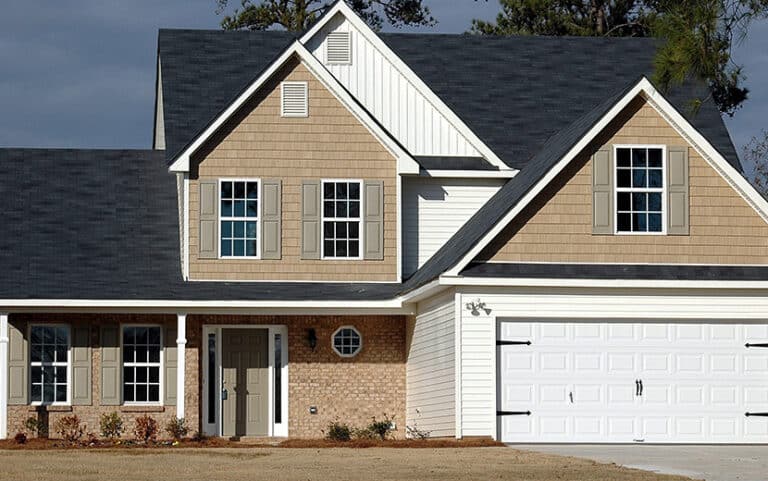Preventative Maintenance vs. Reactive Repairs: Choose the Best Strategy for Your Roof
Nov 30, 2023
Preventative Maintenance vs. Reactive Repairs: Choose the Best Strategy for Your Roof
As a homeowner, keeping your roof in top shape is essential to protect your investment and ensure the safety of your living space. However, deciding whether to adopt a preventative maintenance plan or a reactive repair approach can be a challenge. Both strategies have their merits, yet they bring distinct benefits and drawbacks.
In this article, we compare preventative maintenance and reactive repairs, delving into their respective advantages and disadvantages to help you make an informed decision about the best course of action for your roof’s long-term health. By understanding these two approaches, you can implement a roofing care strategy that effectively mitigates risks, prolongs the lifespan of your roof, and ultimately saves you money and time in the process.
Preventative Maintenance: A Proactive Approach to Roof Care
Preventative maintenance involves routinely inspecting and maintaining your roof to detect and address potential issues before they escalate into more significant problems. This proactive method can help prolong the life of your roof by reducing the likelihood of damage and ensuring that minor issues are resolved promptly.
Benefits of Preventative Maintenance
- Extended Roof Lifespan: Regular maintenance can increase the longevity of your roof by detecting and resolving issues before they become severe. This proactive approach helps to maintain the structural integrity of the roof, ensuring it performs optimally over its expected lifespan.
- Cost Savings: Addressing minor repairs and maintenance tasks as they arise can help save money in the long run by avoiding more extensive and costly repairs resulting from neglect. Additionally, some roofing warranties may require periodic maintenance to keep the warranty valid.
- Improved Energy Efficiency: Identifying and rectifying insulation and ventilation issues during routine maintenance can help to optimize your home’s energy efficiency. Properly maintained roofs provide better insulation, which can lead to lower energy bills.
- Enhanced Safety and Comfort: Regular roof maintenance can also identify and address potential hazards, such as leaks and mold growth. A well-maintained roof offers improved protection against the elements, ensuring a safer and more comfortable living environment.
Reactive Repairs: A Responsive Approach to Roof Care
Reactive repairs involve addressing roofing issues as they arise, without a predetermined inspection or maintenance schedule. This approach focuses on repairing visible damage and relies on the assumption that most roofing problems are noticeable without regular checkups.
Benefits of Reactive Repairs
- Lower Initial Costs: Reactive repairs often have less upfront cost compared to preventative maintenance since you address issues as they arise. This approach may seem cost-effective in the short term, especially for new roofs with few or no known problems.
- Flexibility: Reactive repairs provide flexibility for homeowners, allowing you to address roofing issues as they appear without being tied to a regular maintenance schedule. This approach enables you to prioritize roof repairs as needed without committing to a set timetable.
- Ideal for Roofs Nearing End of Life: Reactive repairs can be a suitable approach for older roofs reaching the end of their lifespan. With limited life expectancy remaining, reactive repairs allow for addressing only the most critical issues instead of investing in exhaustive preventative care.
Drawbacks of Reactive Repairs
- Higher Long-Term Costs: While reactive repairs may have lower initial costs, they can result in significantly higher long-term expenses. Reactive repairs do not catch minor issues before they escalate, which can lead to costly repairs or even premature roof replacement.
- Shortened Roof Lifespan: Neglecting routine maintenance can shorten the life of your roof, leading to more frequent and costly replacements. When minor issues go unnoticed, they can compromise the roof’s structural integrity, resulting in major damage over time.
- Increased Risk of Damage: As reactive repairs address only visible damage, hidden issues may worsen over time until they cause significant problems. This approach can leave your home susceptible to water damage, mold growth, and even structural issues.
- Reactive repairs may void warranties: Some roofing material manufacturers and contractors may require regular maintenance to keep their warranties valid. Failure to adhere to these requirements could void your warranty, leaving you financially responsible for any damages or issues.
Choosing the Right Approach for Your Roof
Determining whether preventative maintenance or reactive repair is the best strategy for your roof depends on various factors, including your roof’s age, condition, materials, and local weather conditions. Consider the following factors to help make an informed decision:
- Roof Age: For newer roofs, a preventative maintenance approach can help extend the roof’s lifespan and minimize repair costs. As the roof ages, reactive repairs may become more appropriate to address only critical issues without investing in extensive maintenance.
- Roof Condition: A roof in relatively good condition can benefit from preventative maintenance to preserve its integrity. If your roof is in poor condition, reactive repairs may be necessary to address severe, immediate issues.
- Local Climate: If you live in an area with harsh weather conditions, such as frequent storms, high winds, or extreme temperatures, a preventative maintenance approach can help ensure your roof is well-protected against the elements.
- Budget: While preventative maintenance often provides long-term cost savings, homeowners with budget constraints may opt for reactive repairs to limit upfront expenses. However, it’s essential to prepare for potential high repair costs down the line.
Preventative maintenance and reactive repairs both have their advantages and disadvantages depending on your home’s unique circumstances. To make the best decision for your roof, consider factors such as age, condition, climate, and budget while consulting with a trusted roofing professional like Honey Bees Roofing & Solar for expert guidance on maximizing your roof’s performance and longevity.
Ensure Your Roof Stands the Test of Time with Honey Bees Roofing & Solar
Deciding between preventative maintenance and reactive repairs for your roof is an important consideration for homeowners. Preventative maintenance offers long-term benefits, including extending the life of your roof, reducing repair costs, and optimizing your home’s energy efficiency. On the other hand, reactive repairs provide flexibility, lower initial costs, and may be suitable for roofs nearing the end of their lifespan.
Whether you choose preventative maintenance or reactive repairs, partnering with a trusted roofing contractor like Honey Bees Roofing & Solar can ensure your roof receives the expert care it deserves. Our experienced roofing contractors can help you determine the best approach for your unique needs and provide high-quality service to keep your roof in top condition. Contact us today to discuss your roofing needs and let us help you protect your home with a tailored maintenance plan or repair solution.
